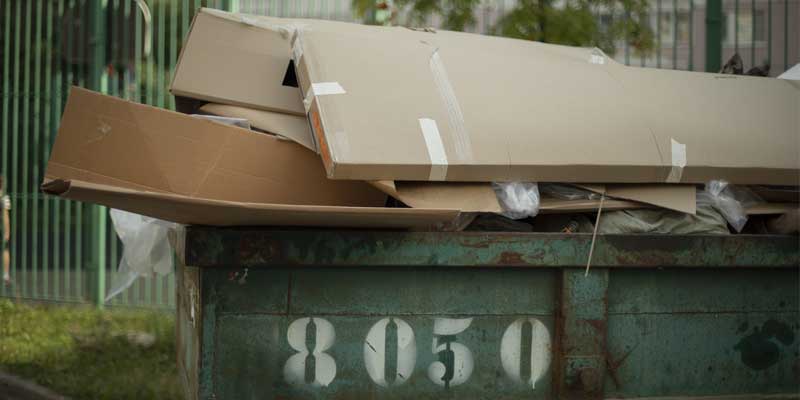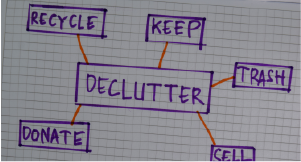
Updated November 13, 2025
Composting is a great way to start living a greener lifestyle.
It doesn’t take too much work compared to the long list of benefits it offers, including minimizing trash, reducing impact on the environment and landfills, improving soil, halting erosion, preventing weeds, and saving you money.
This guide will show you everything you need to know to get started composting your trash and yard waste.
Jump to:
- The Science Behind Composting
- Three Main Components of Composting
- Ideal Location for Compost Pile/Bin
- What to Compost
- What NOT to Compost
- Common Problems
- Helpful Tips
Find a yard waste removal company in your area
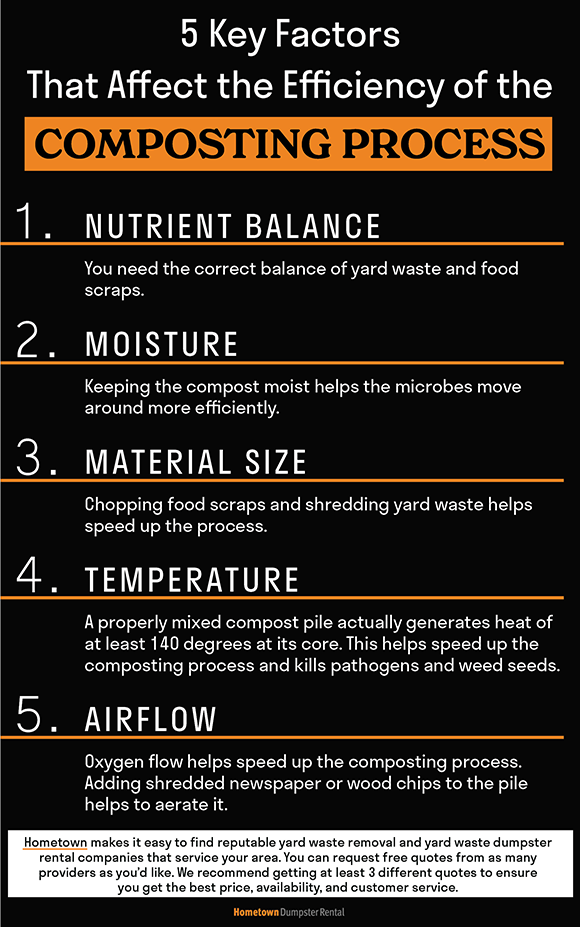
The Science Behind Composting
According to the Environmental Protection Agency (EPA), yard trimmings and food waste makes up about 27% of total garbage entering the municipal waste stream.
If you add wood and paper waste to the equation—both compostable items—you’re talking about two-thirds of the total municipal waste in the United States.
That’s 250 million tons of trash or the equivalent of nearly one ton of trash per person living in the U.S.
Composting is beneficial for both the environment and your wallet, but before you start throwing your garbage in a pile hoping for it to turn into nutrient-rich compost, it’s important to know the science behind it all to make sure you’re doing it the right way.
Composting occurs due to the natural decomposition process that takes place when plants die.
Millions of microbes in the compostable materials work to break down the matter into nutrient-rich compost in as little as 1-2 months.
There are five key factors that influence how efficiently the composting process works:
- Nutrient Balance: You need the correct balance of yard waste and food scraps.
- Moisture: Keeping the compost moist helps the microbes move around more efficiently.
- Material Size: Chopping food scraps and shredding yard waste helps speed up the process.
- Temperature: A properly mixed compost pile actually generates heat of at least 140 degrees at its core. This helps speed up the composting process and kills pathogens and weed seeds.
- Airflow: Oxygen flow helps speed up the composting process. Adding shredded newspaper or wood chips to the pile helps to aerate it.
Three Main Components of Composting
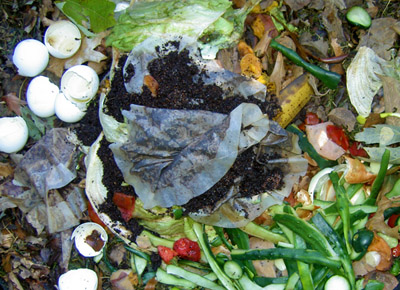
The three main “ingredients” of a compost pile include water, brown and green materials, and oxygen.
Brown materials include dead leaves, twigs, dead plants, cardboard, and more.
Green materials include grass clippings, manure, food scraps, and more.
The brown materials supply a large amount of carbon to the mixture while green materials deliver a steady supply of nitrogen.
The compost mixture should contain far more brown (carbon) materials than green (nitrogen) items.
A C/N ratio of about 20-30:1 is ideal.
If you have too many greens and not enough browns, your compost will begin to stink.
Water is added to the mixture only to keep it from drying out – it must always be kept moist.
Learn more:
- Composting 101: What's In, What's Out? [Infographic]
- Yard Waste Dumpster Rental Guide
- 6 of the Best Ways to Dispose of Yard Waste
Find a yard waste dumpster in your hometown
Ideal Location for Compost Pile/Bin
You can compost indoors or outdoors.
The EPA suggests choosing a dry, shady location near a water source if you plan to compost outdoors.
The composting bin should be at least 3 x 3 x 3 feet in size (1 cubic-yard), and you can use any container that allows for airflow.
Chicken wire also makes a perfect (and inexpensive) composting bin.
Indoor composting is ideal if you don’t have a yard or space to compost outdoors.
Start by drilling half-inch holes in the bottom and sides of a small plastic garbage container.
Put a brick in the bottom of a large garbage container surrounded with a layer of soil or wood chips.
Place the smaller container inside the larger container on top of the brick and layer of brown material.
Wrap insulation around the larger can to keep it warm and keep it covered with the lid.
Whether you compost indoors or outdoors, it’s important to try and keep the mixture of brown and green materials at the correct ratio.
It’s also a good idea to mix the compost a couple of times per week to aerate the mixture.
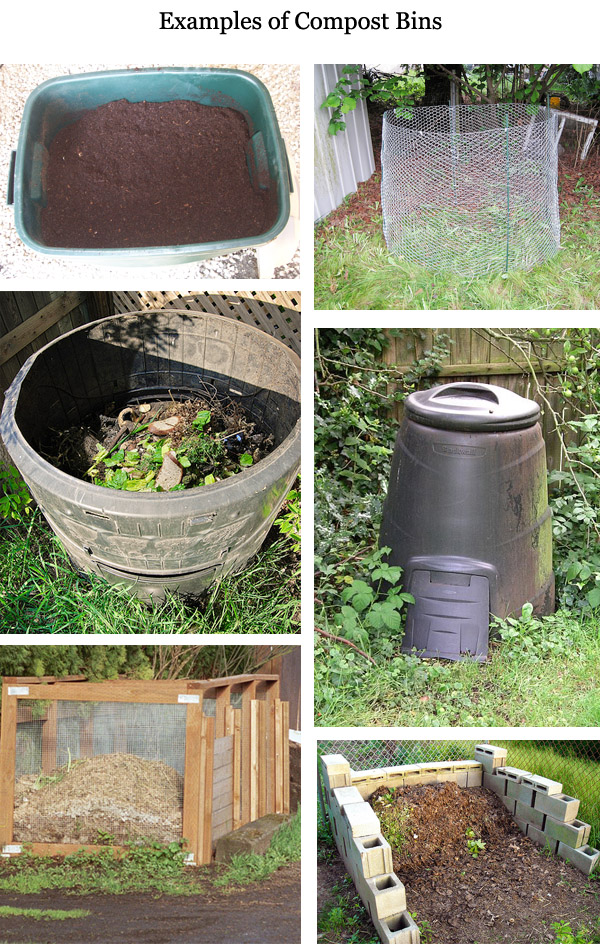
What to Compost
You shouldn’t throw all of your trash into a compost pile.
As far as food scraps go, only add plant-based food scraps to the pile.
This includes vegetables, fruits, coffee, nutshells, and tea bags.
The one animal-based product that is good for composting is eggshells, which contain a large amount of calcium.
Other items you should compost include cardboard, hair, wood ashes, dryer sheets, sawdust, yard trimmings, paper (without toxic paints/inks), newspaper, wood ships, and plants.
Manure is also ideal for composting; however, only use manure from animals that are herbivores, such as horses and cows.
What NOT to Compost
Avoid adding animal-based products to the compost pile, including dairy, fat, oil, meat, bones, eggs, and butter.
These items will attract mice, raccoons, and other pests. Not to mention, it will create a foul odor.
Other items to avoid include charcoal, cat/dog waste, yard waste treated with pesticides, diseased plants, and black walnut leaves/twigs.
Recyclables, such as plastics and metal, are not compostable.
This type of trash recycling is available in virtually all major U.S. cities across the country.
Learn more: Rent a Recycling Dumpster: Sizes and Costs
Common Problems
Compost Pile Smells Bad
Contrary to what some people think, compost piles shouldn't smell bad. When it does, there’s something wrong.
The primary culprits are too much water and animal-based food scraps.
Pests/Rodents
If you find pests infiltrating your compost pile, be extra cautious to not add animal-based scraps to the pile.
Also, rodent-proof the bin by putting a lid on it, making the holes on the side smaller, and/or doubling up the chicken wire to prevent access to the pile.
Pile isn't Composting
If the pile isn’t showing signs of decomposition, check to see if it’s moist by using a pitchfork or shovel to stir it up, and add water as needed.
If moisture isn’t the problem, it may be a lack of nitrogen.
Add grass clippings or manure to introduce more nitrogen to the pile.
Helpful Tips
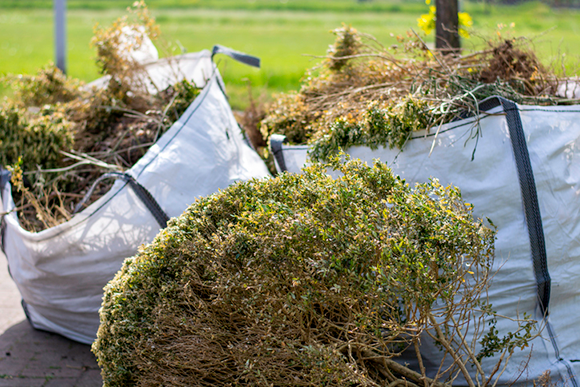
Tip #1: Compost during the summer months. The warmer weather speeds up the process.
Tip #2: Collect your compostable food scraps in a small container under the kitchen sink or other designated place using a small container to reduce the number of trips you take to the compost bin.
Tip #3: The compost is ready to use when it looks similar to topsoil. This may take as little as one month and up to two years depending upon how well you maintain the pile and types of material you use.
Tip #4: Two compost piles are better than one. This allows you to continue composting one pile while harvesting the other.
Tip #5: If you have accumulated an overwhelming collection of yard waste that you need to get rid of, consider renting a yard waste dumpster or hiring yard waste removal services.
Hometown makes it easy to find dumpster rental and junk removal companies in your area. You can request free pricing and availability information from as many dumpster rental providers as you'd like or request a free junk removal quote to have your junk hauled away by the professionals.
Get free dumpster rental and junk removal companies near you
Continue reading:
